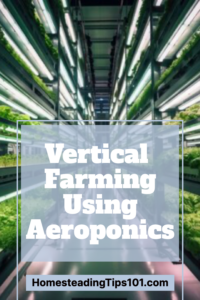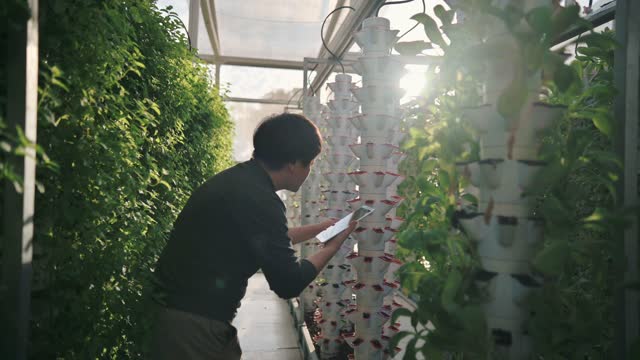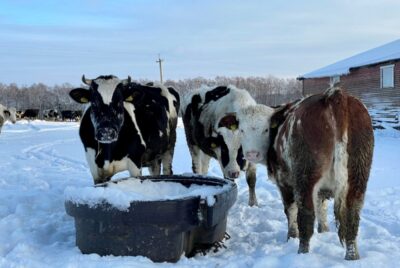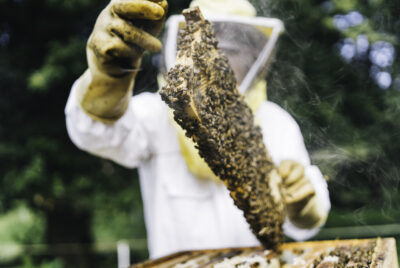Vertical Farming Using Aeroponics
"We may earn a commission from purchases made using our links. Please see disclaimer."
Exploring the World of Vertical Farming and Aeroponics
As an enthusiast and advisor in the field of vertical farming, I am thrilled to introduce you to the innovative concept of vertical farming using aeroponics. This revolutionary method of cultivation holds great promise for sustainable and efficient agricultural practices. In this article, we will delve into the benefits, functioning, setup process, challenges, and future potential of vertical farming using aeroponics.
Benefits of Vertical Farming using Aeroponics
Unlocking the Advantages
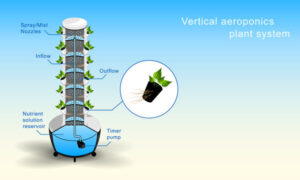 Vertical farming allows anyone to grow fresh produce year-round. Homesteaders can easily set up small vertical gardens in unused spaces. With some simple DIY aeroponic systems, you can grow herbs and greens even in urban apartments. Aeroponic vertical gardens let homesteaders take control of food production while minimizing resource use. Vertical aeroponic systems enable optimal plant nutrition and accelerated growth.
Vertical farming allows anyone to grow fresh produce year-round. Homesteaders can easily set up small vertical gardens in unused spaces. With some simple DIY aeroponic systems, you can grow herbs and greens even in urban apartments. Aeroponic vertical gardens let homesteaders take control of food production while minimizing resource use. Vertical aeroponic systems enable optimal plant nutrition and accelerated growth.
Vertical farming using aeroponics offers a multitude of benefits that make it an attractive choice for modern agricultural practices. Firstly, it allows us to cultivate crops in a controlled environment, independent of weather conditions and geographical limitations. This ensures a consistent supply of fresh produce throughout the year, eliminating seasonal variations. Additionally, vertical farming optimizes land use by maximizing crop yield per square meter, which is especially valuable in urban areas with limited space.
Furthermore, aeroponic systems enable plants to grow in a soilless environment, reducing the risk of soil-borne diseases and pests. By misting nutrient-rich water directly onto plant roots, aeroponics provides plants with an ideal environment for growth, leading to faster and healthier crop development. This method also reduces water consumption significantly compared to traditional farming methods, making it a sustainable choice for the future.
How Aeroponics Works
Unveiling the Technique
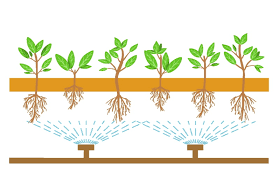 Aeroponic systems are surprisingly simple to understand. Essentially, plant roots hang in the air while getting misted with a nutrient solution. This oxygenates roots while delivering complete nutrition. Home gardeners can easily create DIY aeroponic setups with basic materials. Aeroponic misting nurtures plants from seed to harvest for optimal fresh flavor and nutrition.
Aeroponic systems are surprisingly simple to understand. Essentially, plant roots hang in the air while getting misted with a nutrient solution. This oxygenates roots while delivering complete nutrition. Home gardeners can easily create DIY aeroponic setups with basic materials. Aeroponic misting nurtures plants from seed to harvest for optimal fresh flavor and nutrition.
Aeroponics is a cutting-edge cultivation technique that involves suspending plant roots in an enclosed environment while supplying essential nutrients through a fine mist of water. Unlike hydroponics, which submerges roots in water, aeroponics ensures that the roots receive a nutrient-rich mist, providing an optimal balance of oxygen and nutrients. This unique approach allows for efficient nutrient absorption and accelerated growth rates, resulting in higher yields and healthier plants.
Setting up a Vertical Farm
Laying the Foundation
Choosing the Right Location
 When choosing a location for a home vertical garden, consider sunlight, space, and convenience. Sunny windows, patios, and balconies often make ideal spots for small-scale vertical growing at home. Make sure to situate vertical gardens somewhere easy to access for tending and harvesting. Position vertical gardens to receive at least 6 hours of direct sunlight for robust plant growth.
When choosing a location for a home vertical garden, consider sunlight, space, and convenience. Sunny windows, patios, and balconies often make ideal spots for small-scale vertical growing at home. Make sure to situate vertical gardens somewhere easy to access for tending and harvesting. Position vertical gardens to receive at least 6 hours of direct sunlight for robust plant growth.
When establishing a vertical farm using aeroponics, selecting the appropriate location is crucial. Look for spaces with ample access to natural light or consider implementing artificial lighting systems for indoor farming. Proximity to markets and transportation infrastructure is also essential for efficient distribution of produce.
Designing the Farm Structure
DIY vertical gardens can be designed from various everyday materials. Simple vertical structures might use shelves, hanging pipes, ladders, or stacked containers. More advanced homesteaders can try framing multi-level vertical beds for maximizing grow space. Experiment with vertical garden materials and arrangements until you find an optimized structure for your space.
Designing a well-structured farm is vital for maximizing space and facilitating efficient workflow. Consider utilizing vertical towers or racks to accommodate multiple layers of crops. Implementing advanced technologies for irrigation, lighting, and climate control systems will further enhance productivity and streamline operations.
Selecting Suitable Crops
When selecting crops for home vertical gardens, focus on faster-growing greens and herbs. Lettuces, spinach, kale, basil, oregano, and chives all thrive with vertical growing and provide nutritious fresh additions to meals. Consider mini veggie varieties for compact home vertical gardens.
Not all crops thrive in aeroponic systems, so it’s important to carefully choose the right plants for your vertical farm. Leafy greens, herbs, strawberries, and tomatoes are some of the crops that have shown excellent results in aeroponic environments. Conduct thorough research to determine which crops align with your farm’s goals and market demand.
Nutrient Delivery in Aeroponic Systems
Nourishing the Roots
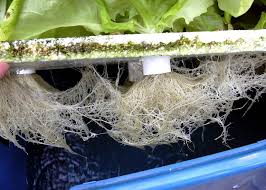 Getting nutrient balance right is vital for healthy home vertical gardens. Mix complete hydroponic nutrients based on directions, adjusting strength for seedlings vs mature plants. Always check pH when mixing nutrients. Monitor plants and tweak nutrient balance as needed. Test different nutrient formulas to determine optimal mixtures.
Getting nutrient balance right is vital for healthy home vertical gardens. Mix complete hydroponic nutrients based on directions, adjusting strength for seedlings vs mature plants. Always check pH when mixing nutrients. Monitor plants and tweak nutrient balance as needed. Test different nutrient formulas to determine optimal mixtures.
A critical aspect of vertical farming using aeroponics is the precise delivery of nutrients to the plants. Through a combination of water and nutrient solutions, the misting process ensures that plant roots receive a consistent supply of essential elements. This targeted nutrient delivery method allows plants to utilize resources efficiently, resulting in faster growth and improved crop quality.
Water and Energy Efficiency in Aeroponics
Conserving Resources
 Aeroponics is water-wise gardening. Home vertical gardens with aeroponic or other hydroponic methods can grow more produce while using 10x less water than soil gardening. Pair with renewable energy sources like solar for an eco-friendly vertical garden. Carefully calibrate and monitor aeroponic misters to minimize water waste.
Aeroponics is water-wise gardening. Home vertical gardens with aeroponic or other hydroponic methods can grow more produce while using 10x less water than soil gardening. Pair with renewable energy sources like solar for an eco-friendly vertical garden. Carefully calibrate and monitor aeroponic misters to minimize water waste.
One of the key advantages of aeroponics is its exceptional water efficiency. By misting the nutrient solution directly onto the roots, the system minimizes water wastage, reducing consumption by up to 95% compared to traditional farming methods. Additionally, integrating energy-efficient technologies such as LED lighting and automated climate control systems further optimizes energy usage, making vertical farming using aeroponics an environmentally friendly choice.
Automation and Control Systems in Vertical Farms
Streamlining Operations
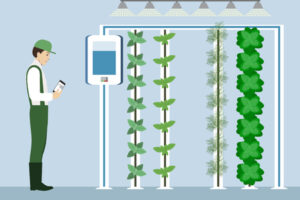 While commercial vertical farms rely on high-tech automation, home gardeners can employ simple DIY automation for consistency. Timers, thermostats, moisture sensors and automatic misters allow close monitoring and control without constant labor. Start simple when adding vertical garden automation, avoiding unnecessary complexity.
While commercial vertical farms rely on high-tech automation, home gardeners can employ simple DIY automation for consistency. Timers, thermostats, moisture sensors and automatic misters allow close monitoring and control without constant labor. Start simple when adding vertical garden automation, avoiding unnecessary complexity.
Automation and control systems play a vital role in managing vertical farms efficiently. By utilizing sensors, artificial intelligence, and data analytics, farmers can monitor and adjust various parameters such as temperature, humidity, and nutrient levels. These smart technologies enable precise control, ensuring optimal growing conditions for the crops and minimizing human error.
Vertical Farming and Sustainability
Cultivating a Greener Future
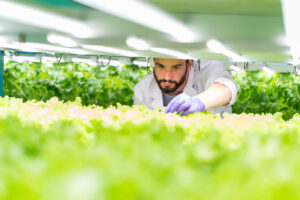 Home vertical gardens align perfectly with homesteading and self-reliant living. Taking control of how your food is grown allows homesteaders to minimize resource waste while nurturing plants naturally. Sharing vertical gardening knowledge in homesteading communities enables collective progress.
Home vertical gardens align perfectly with homesteading and self-reliant living. Taking control of how your food is grown allows homesteaders to minimize resource waste while nurturing plants naturally. Sharing vertical gardening knowledge in homesteading communities enables collective progress.
Vertical farming using aeroponics aligns with the principles of sustainability. By reducing land and water usage, minimizing pesticide and fertilizer requirements, and eliminating the need for long-distance transportation of produce, this method significantly reduces the environmental impact of agriculture. Embracing vertical farming contributes to a greener and more sustainable future for our planet.
Challenges and Solutions in Vertical Farming Using Aeroponics
Overcoming Obstacles
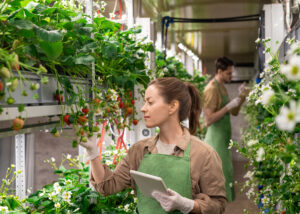 While vertical gardening has advantages, home growers may encounter some issues like pests, diseases, and balancing nutrients. Start troubleshooting by checking gardening resources and connecting with other homesteaders for advice. Persist through vertical gardening challenges for the rewards of fresh homegrown produce.
While vertical gardening has advantages, home growers may encounter some issues like pests, diseases, and balancing nutrients. Start troubleshooting by checking gardening resources and connecting with other homesteaders for advice. Persist through vertical gardening challenges for the rewards of fresh homegrown produce.
While vertical farming using aeroponics offers numerous advantages, there are also challenges that need to be addressed for successful implementation.
Pest and Disease Management
Due to the controlled environment, pests and diseases can proliferate quickly if not managed effectively. Implementing integrated pest management techniques, such as biological controls and regular monitoring, can help mitigate these risks and maintain healthy crop growth.
Scaling up Production
Expanding a vertical farm operation requires careful planning and investment. Scaling up production involves considerations such as space availability, investment in additional infrastructure, and developing efficient supply chains. Collaborating with experts and exploring partnerships can help streamline the scaling process.
Cost Considerations
The initial investment in vertical farming using aeroponics can be higher compared to traditional farming methods. However, the long-term benefits, including increased yields, year-round production, and reduced resource consumption, make it a financially viable option. Researching and identifying available grants and incentives can also assist in mitigating the upfront costs.
Successful Examples of Vertical Farms Using Aeroponics
Real-Life Inspiration
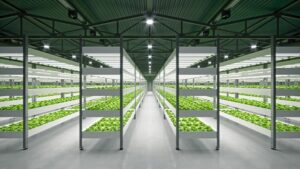 Innovative homesteaders and urban farmers around the world are embracing vertical growing innovations. Connecting with local urban agriculture groups can provide home gardening inspiration and hands-on learning opportunities. Tour and engage with vertical farming pioneers in your region.
Innovative homesteaders and urban farmers around the world are embracing vertical growing innovations. Connecting with local urban agriculture groups can provide home gardening inspiration and hands-on learning opportunities. Tour and engage with vertical farming pioneers in your region.
Numerous successful vertical farms around the world have embraced aeroponics as a cornerstone of their operations. Examples such as “Vertical Greens” in Singapore, “AeroFarms” in the United States, and “Sky Greens” in China have revolutionized the way we perceive agriculture. These pioneers serve as inspiration for aspiring vertical farmers and demonstrate the immense potential of this innovative farming technique.
Economic Potential and Market Opportunities
Cultivating Entrepreneurial Success
For homesteaders interested in self-reliant living, vertical gardening opens doors for selling excess produce, herbs, sprouts and more at local markets. Experiment with niche crops and value-added products to realize the full market potential.
The economic potential of vertical farming using aeroponics is substantial. By enabling the cultivation of high-value crops in urban areas, vertical farms can cater to local markets and reduce dependence on imported produce. Additionally, the growing demand for fresh, pesticide-free, and locally grown produce presents a unique market opportunity for vertical farmers to establish a niche and build a loyal customer base.
The Future of Vertical Farming Using Aeroponics
Growth and Innovation
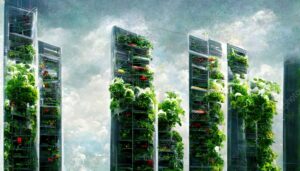 The future looks bright for increased adoption of vertical farming for homesteaders and urban farmers. Expect continuing innovations in small-scale growing methods, automation, renewable integration, and plant breeding. Join vertical gardening communities to exchange ideas and advance best practices.
The future looks bright for increased adoption of vertical farming for homesteaders and urban farmers. Expect continuing innovations in small-scale growing methods, automation, renewable integration, and plant breeding. Join vertical gardening communities to exchange ideas and advance best practices.
The future of vertical farming using aeroponics looks promising. Advancements in technology, increased awareness of sustainability, and the need for food security are driving the adoption of this innovative farming method. As more research and development efforts are invested, we can expect further optimization of crop yields, improvements in energy efficiency, and the emergence of new vertical farming techniques.
Conclusion
In conclusion, vertical farming using aeroponics represents a game-changing approach to modern agriculture. Its numerous benefits, such as year-round production, resource efficiency, and reduced environmental impact, make it a compelling choice for farmers and entrepreneurs alike. With careful planning, implementation of advanced technologies, and addressing challenges, vertical farming using aeroponics has the potential to revolutionize the way we grow food and contribute to a more sustainable future.
FAQs (Frequently Asked Questions)
FAQ 1: Is vertical farming using aeroponics suitable for all types of crops?
While aeroponics can be used for a wide range of crops, certain plants, such as root vegetables, may not be well-suited for this cultivation method. It is important to select crops that thrive in soilless environments and have proven success in aeroponic systems.
FAQ 2: How does vertical farming using aeroponics conserve water compared to traditional farming?
Vertical farming using aeroponics reduces water consumption by up to 95% compared to traditional farming methods. This is achieved by misting nutrient-rich water directly onto the plant roots, minimizing wastage and optimizing water usage.
FAQ 3: Are vertical farms using aeroponics expensive to set up?
The initial investment in vertical farming using aeroponics can be higher compared to traditional farming methods. However, the long-term benefits, including increased yields, reduced resource consumption, and year-round production, make it a financially viable option. Additionally, exploring available grants and incentives can help mitigate the upfront costs.
FAQ 4: How do vertical farms using aeroponics manage pests and diseases?
Integrated pest management techniques, such as biological controls and regular monitoring, are employed in vertical farms using aeroponics. By implementing proactive measures, farmers can minimize the risk of pests and diseases and maintain healthy crop growth.
FAQ 5: Can vertical farming using aeroponics contribute to food security?
Vertical farming using aeroponics has the potential to enhance food security by enabling local production of fresh produce. By reducing dependence on long-distance transportation and ensuring year-round cultivation, vertical farms can provide a consistent supply of nutritious food, even in urban areas.
